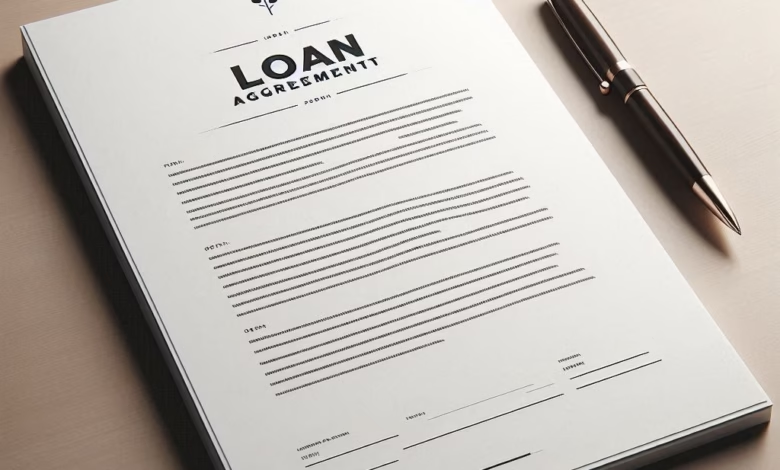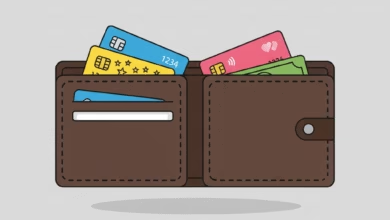What does it mean to be a co-signer on a loan?
Understand what a co-signer is and how it works in a loan

Being asked to co-sign a loan can feel like a compliment. A friend, child, or family member trusts you enough to ask for your help in a pivotal financial moment, whether it’s for their first car, a student loan for college, or even a mortgage. While the request comes from a place of trust, saying “yes” is a significant financial decision with long-lasting consequences. It’s far more than just a character reference; it’s a legally binding promise that you will be on the hook for the entire loan amount if the primary borrower fails to pay.
Before you lend your good name and credit score to someone else’s financial obligations, it’s crucial to understand the full scope of what it means to be a co-signer. This comprehensive guide will walk you through the responsibilities, the serious risks, the potential benefits, and everything else you need to consider before making this important decision.
The Core Role of a Co-signer: More Than Just a Helping Hand

At its most basic level, a co-signer is someone who agrees to be legally responsible for someone else’s debt. Lenders require a co-signer when the primary borrower doesn’t meet their lending criteria on their own. This is common for:
- Young adults or students with little to no credit history.
- Individuals with a low credit score due to past financial mistakes.
- Borrowers with a high debt-to-income ratio, meaning their existing debts take up too much of their monthly income.
- People with an unstable employment history.
By co-signing, you are essentially lending your financial strength to the application. The lender sees you as a safety net. Your good credit score and stable financial history provide the lender with the assurance that if the primary borrower defaults, there’s another responsible party who will make the payments. In the eyes of the lender, you are just as responsible for the debt as the person who is actually receiving the money.
Your Legal and Financial Responsibilities as a Co-signer
Understanding your obligations is the most critical aspect of co-signing a loan. Many people mistakenly believe they are only a backup, but the reality is much more direct.
You are 100% responsible for the debt. If the primary borrower misses a payment, even by a single day, the lender has the legal right to demand the full payment from you immediately. They are not required to pursue the primary borrower first. You are responsible for the entire loan balance, including any accrued interest and late fees.
Your assets are on the line. If the loan goes into default and you are unable to make the payments, the lender can take legal action against you to collect the debt. This could include suing you in court, which could lead to wage garnishment or placing a lien on your property.
This responsibility is not easily erased. Even if the primary borrower declares bankruptcy, you will still be held responsible for the full amount of the loan. The debt does not simply disappear.
The Significant Risks of Co-signing a Loan

While the act of co-signing is often born out of generosity, it’s fraught with potential risks that can have a severe impact on your financial well-being.
Direct Impact on Your Credit Score
When you co-sign a loan, it appears on your credit report as if it were your own debt. This has several consequences:
- Payment History: Any late or missed payments made by the primary borrower will be reported on your credit history, which can significantly lower your credit score. Payment history is the single most important factor in determining your credit score.
- Increased Debt-to-Income Ratio: The co-signed loan increases your total debt obligations, which can raise your debt-to-income (DTI) ratio. A higher DTI can make it more difficult for you to get approved for new credit, such as a mortgage, car loan, or new credit card.
- Credit Inquiries: The initial loan application will result in a hard inquiry on your credit report, which can cause a temporary dip in your score.
Strain on Personal Relationships
Money and relationships can be a tricky mix. If the primary borrower struggles to make payments, it can create tension and resentment. Having to chase a friend or family member for a loan payment you are now responsible for can irrevocably damage a cherished relationship. Before co-signing, have an honest conversation about finances and consider the potential emotional fallout if things go wrong.
Limited Control, Full Responsibility
As a co-signer, you have no ownership rights to the asset being financed. For example, if you co-sign a car loan, your name is not on the title, and you have no legal right to the vehicle. However, you are still fully responsible for the loan payments. This creates a scenario where you carry all of the risk with none of the ownership benefits.
Are There Any Benefits to Being a Co-signer?

While the risks are substantial, there are a few potential, though less direct, benefits to being a co-signer.
Helping a Loved One: The primary motivation for most co-signers is to help someone they care about achieve a financial goal. Co-signing can be the key that unlocks a loan for someone who otherwise wouldn’t qualify, allowing them to purchase a needed car, finance their education, or secure a place to live.
Potential to Boost Your Credit (with caution): If the primary borrower makes all their payments on time, the positive payment history will also be reflected on your credit report. This can potentially help your credit score by adding to your on-time payment history and improving your credit mix. However, this is a risky way to build credit, as the potential for damage from a single missed payment is far greater than the potential benefit.
Co-signer vs. Co-borrower: Understanding the Key Differences
The terms “co-signer” and “co-borrower” are often used interchangeably, but they represent two distinct legal roles.
A co-borrower (also known as a joint applicant) shares equal responsibility for the loan and also has equal ownership rights to the asset being purchased. A classic example is a married couple buying a house together. Both names are on the mortgage, and both are on the title to the property.
A co-signer, on the other hand, is only a guarantor. They share full responsibility for the debt but have no ownership rights. A parent co-signing a car loan for their child is a common scenario. The parent is responsible for the payments if the child defaults, but the car legally belongs to the child.
Before You Sign on the Dotted Line: A Checklist
If you are still considering co-signing a loan, it’s essential to proceed with extreme caution and do your due diligence. Ask yourself these questions:
- Can I afford to make the full loan payments? Don’t just consider the monthly payment. Look at the total loan amount, including interest, and be prepared to pay it all back yourself. If taking on this debt would put you in a precarious financial position, the answer should be no.
- Why does the primary borrower need a co-signer? Is it due to a lack of credit history, or is it because of a history of financial irresponsibility? The reason matters.
- Have we had an open and honest conversation about finances? Discuss a detailed budget with the primary borrower. What is their plan for making the payments? What will happen if they lose their job or face an unexpected expense?
- Have I reviewed the loan agreement thoroughly? Understand all the terms and conditions, including the interest rate, late fees, and what happens in the event of a default. By law, the lender must provide you with a “Notice to Cosigner” that explains your obligations in plain language.
- Am I prepared for the impact on my own financial goals? Remember that this loan will appear on your credit report and could affect your ability to get credit in the future.
Is There a Way Out? How to Get Released from a Co-signed Loan

Being a co-signer is not necessarily a life sentence, but getting your name off the loan can be challenging. Here are a few potential avenues:
- Co-signer Release: Some loans, particularly student loans and auto loans, have a co-signer release clause in the contract. This typically requires the primary borrower to make a certain number of on-time payments (usually 12 to 24) and then re-apply for the loan on their own, demonstrating that their credit and income have improved enough to qualify without a co-signer.
- Refinancing: The primary borrower can apply to refinance the loan in their name only. If they are approved, the new loan pays off the old one, and your obligation as a co-signer is fulfilled. This is often the most straightforward way to be released from the loan.
- Pay Off the Loan: The simplest, though not always the easiest, way to end your co-signer responsibility is for the loan to be paid off in full, either by the primary borrower or, in a worst-case scenario, by you.
Exploring Alternatives to Co-signing
If the risks of co-signing are too great, there are other ways you can help a loved one without putting your own financial future on the line:
- Offer a Personal Loan: If you have the savings, you could offer to lend the money yourself. This allows you to set the terms and avoids involving a financial institution. Be sure to put the agreement in writing to avoid any misunderstandings down the road.
- Help with a Down Payment: Providing a larger down payment can sometimes help a borrower get approved for a loan on their own or secure a lower interest rate.
- Teach Good Financial Habits: Help the person build a budget, work on improving their credit score, and save for their goal. This is a long-term solution that empowers them to achieve financial independence.
In conclusion, being a co-signer is a serious commitment that should not be taken lightly. It is an act of significant financial trust that can have profound and lasting consequences. While the desire to help a loved one is admirable, it’s essential to protect your own financial well-being first. By understanding the full scope of your responsibilities and the risks involved, you can make an informed decision that is right for both you and the person you are trying to help.





